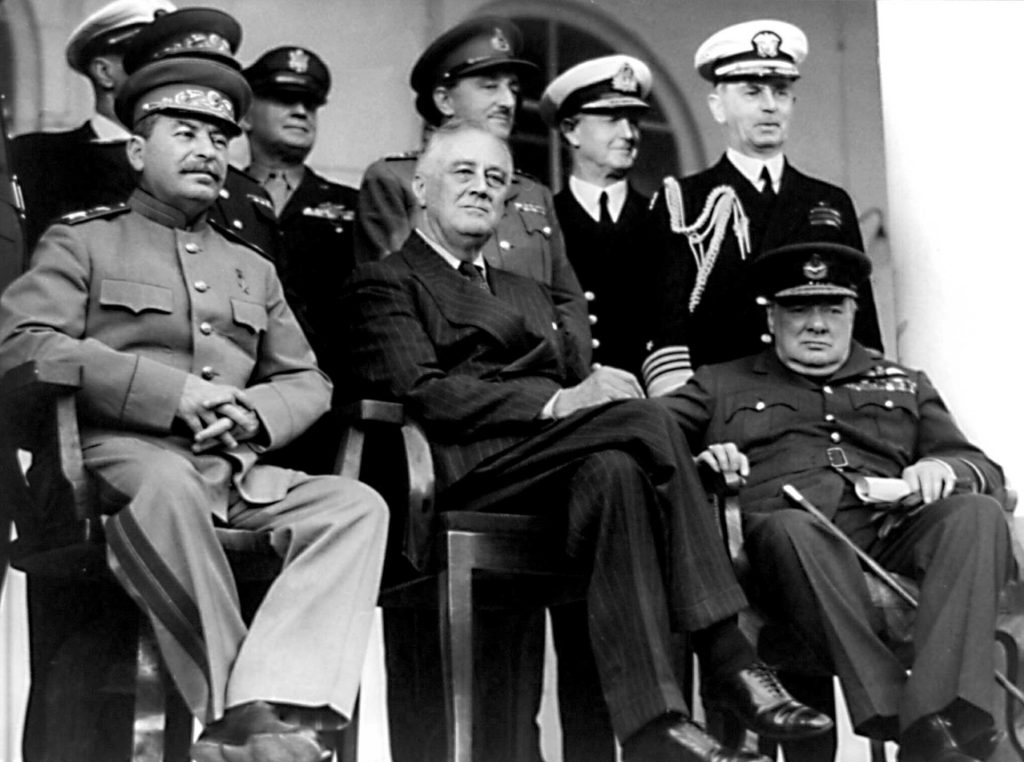When students think about the end of a war, they may imagine a dramatic and decisive military battle straight out of the movies. But a deeper understanding of history requires a look behind the scenes—to the more subtle world of diplomatic negotiation.
The image to the left depicts a meeting between Soviet leader Joseph Stalin, U.S. president Franklin D. Roosevelt, and British prime minister Winston Churchill. Together, these men represented the major Allied powers during World War II. As the war neared its conclusion, they met in a series of conferences to plan for the defeat of Germany and Japan.
These meetings, which played a significant role in the ending of the war, are some of the most important (and overlooked) events of the 20th century. Refresh your subject matter knowledge and enhance your World War II instruction with this video lecture by master teacher Lee Eysturlid on the negotiation process during World War II:
This video is part of ABC-CLIO’s educator support site for the World History: The Modern Era database, a platform offering professional development videos, teaching tips, lesson plans, and curriculum resources to serve your instructional needs. Click here to learn more about ABC-CLIO’s research and curriculum databases!




